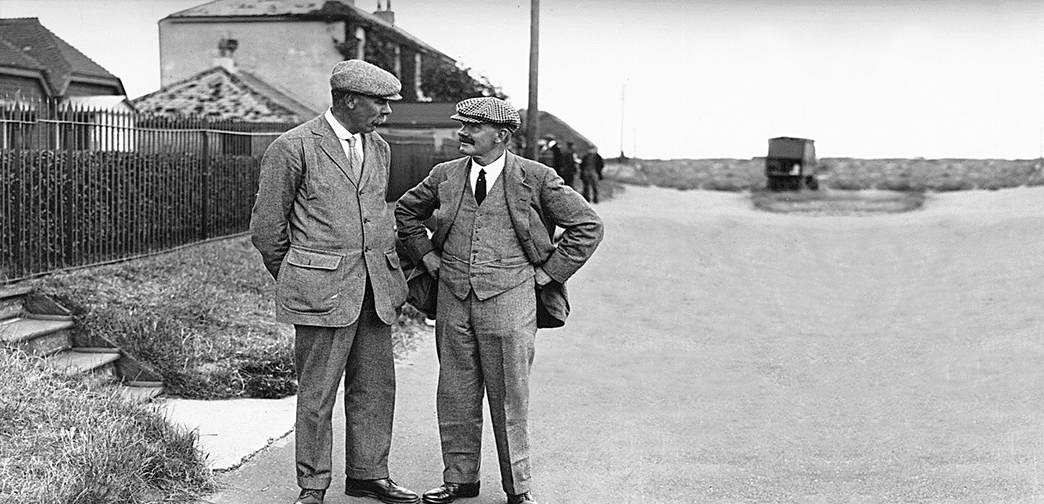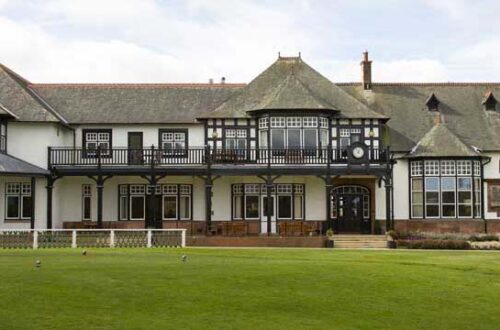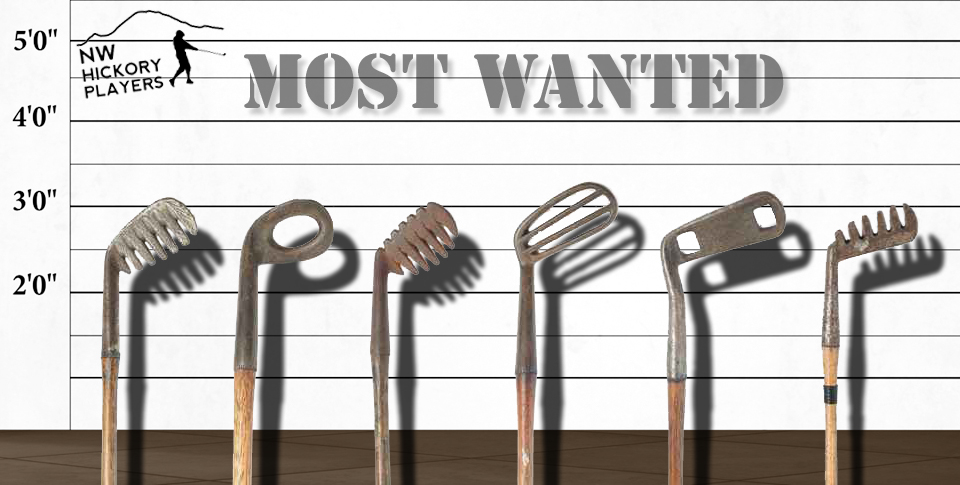Arnaud Massy: A Frenchman with the soul of a Scot
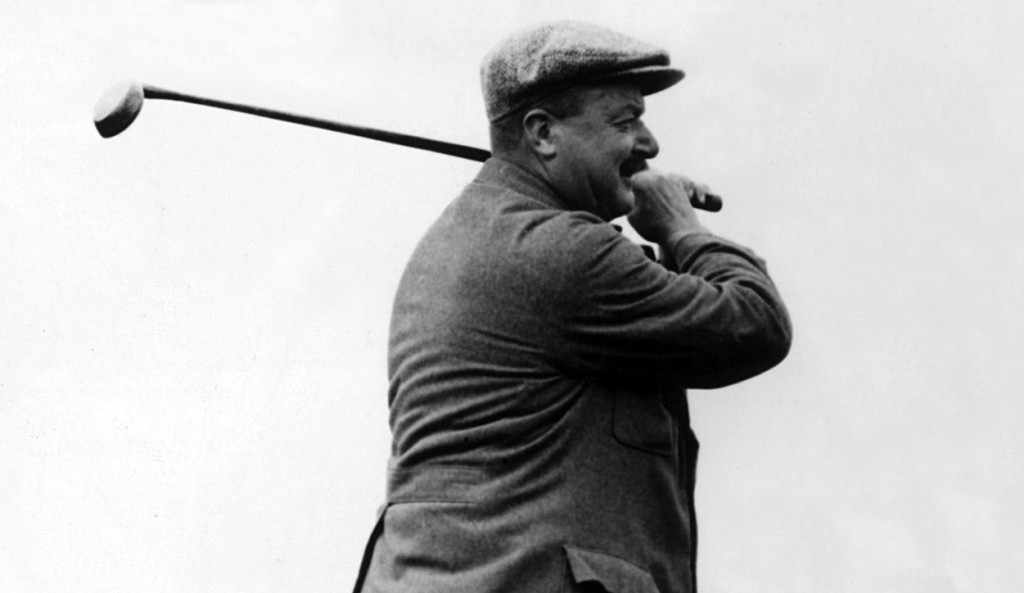
He was the first non-Briton to win the Open Championship, the only Continental European to get his hands on the Claret Jug and win a major until Seve Ballesteros in 1979.
Arnaud Massy was born July 6, 1877 in Biarritz, France, son of Bernard Massy a sheep farmer and his wife, Marie Lauga. On leaving school Arnaud was employed as a sardine fisherman and from the age of fourteen caddied at Biarritz, for mostly English visitors to the Basque region.
Massy was taught the rudimentary skills of club making by sixteen year old Willie Tucker when he was assistant to Willie Dunn at Biarritz. (William H. Tucker Sr. was a club maker with Willie Dunn on Wimbledon Common before following him to France.)
Massy carried for many well known players at Biarritz including Horace Hutchison, Charles Hutchings and Everard Hambro. It was Hambro, a member of North Berwick since 1894, who brought Massy to North Berwick for the summer season when he was 21. Massy was met at the rail station by Davie Grant in a horse and cart. Grant was a teaching pro at North Berwick where Hambro had made arrangements for Massy to learn the craft of club making in James Hutchison’s workshop. Arnaud was granted a professional license on the West Links in August 1899 and he returned to North Berwick with Hambro each season.
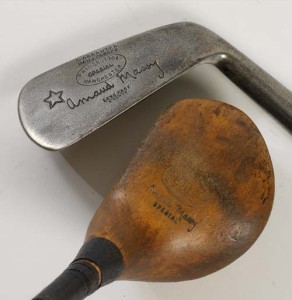
Arnaud was a popular figure with a keen sense of humor, and returned to the West Links on six occasions, teaching for four months during the summer season. He was enormously impressed with Harry Vardon as he watched him at North Berwick during a match against Willie Park in 1899.
Massy used a two-handed grip and an open stance. A powerful man, he was a long hitter and highly regarded as an expert cleek player. He had an unusual action, described as a ‘Pig Tail’ swing which was very upright with a curious flourish at the top. It was said that he had a distinctive twirl at the top of his backswing which dated back to when he played left handed as a youngster.
Harry Vardon was quoted as saying the following about the unique action:
“Arnaud Massy has a curious custom which never fails to put his club on the right track at the start of the downward swing. It has aroused a lot of comment from time to time. I have seen it described as Massy’s “pig-tail,” Massy’s “twiddley-bit” and whatnot, and a great deal of wonderment has been expressed as to why the Frenchman does it and the possible effects of it. What happens is, that, at the top of the swing, Massy makes a strange little flourish, a circling in the air, with the head of his club. Whereas most men, having gone up, promptly start to come down again, Massy waits to perform this “twiddley-bit.” It would be a fine thing for any of us if we possessed the same habit. By giving the club-head that little turn at the top, he pushes it out behind him so that it is almost certain to come down right. It is practically impossible for him to throw his arms forward since they have been urged into the proper track by that flourish which makes the club-head circle away from him. For the average golfer, however, it is sufficient to remember to aim slightly behind at the beginning of the downward swing. There should be no movement at all, except of the arms, until the club is halfway down. It must be first recovered from behind the head while the loosened fingers are coming back on to the shaft. Then, when it is well out to the right, a point or two behind the player, and just beginning to gain impetus, the whole body unwinds, round comes the club, and the stroke is a fine one. A good swing is a certain means of hitting the ball. In order to convince pupils of that fact, I have often closed my eyes tightly and driven without looking at the ball after having taken up the stance and made the address. The proper swing cannot fail.”
Massy played regularly with the best Scottish players, amateur and professional, until he gained the necessary experience to compete at the highest level. He entered his first Open Championship from Biarritz G.C in 1902, and finished tied for tenth place with Andrew Kirkaldy. This was the first time a foreign player had entered the Open. In 1903 he joined the PGA and listed his employment as assistant to Ben Sayers. That year he married North Berwick girl Janet Punton Henderson, known as ‘Jinty’, daughter of Captain Henderson.
In 1904 the News of the World tournament was played at Mid-Surrey Golf Club. Jack White and Andrew Kirkaldy failed to qualify for the finals. Sayers and Massy were drawn together in the first round, and the two men saw no point in both traveling south from North Berwick. They tossed a coin to see who should make the trip and Sayers won the call.
In 1905 Massy entered the Open Championship at St. Andrews from North Berwick, when he finished in 5th place and received £7 10s. The following year he won the inaugural French Open at La Boulie where he was later appointed professional, this was his first of a record four wins in the French Open.
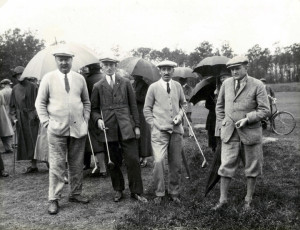
The growth in the popularity of golf in Europe can be attributed to Arnaud Massy, Ben Sayers, Jack White and Davie Grant, who took part in exhibition matches throughout the continent.
In 1907, Arnaud and his wife Jinty entertained a number of North Berwick pros at his club La Boulie, near Versailles about a dozen miles from Paris when they played in the French Open Championship that year. The group. including Ben Sayers, Jack White, Ben Sayers Jr. and Arthur Grant, traveled from Biarritz. Despite the distraction, Arnaud successfully retained the title with rounds of 77, 72, 74, 75 = 298. The winning of this event meant a good deal to Massy as he had an engagement hanging on the championship which would not have matured had he failed to win. This was with a French millionaire who had taken to golf and wanted two months coaching. Massy went to the Engadine Valley and played chiefly at Samaden. He returned to North Berwick in September where his matches with Mr. A.J. Balfour and Mr J.E. Laidlay and others were always of a private nature.
At this time, George Nicoll from Leven, Fife made clubs stamped A. Massy, La Boulie G.C Paris, for sale at the club. He was also supplied with heads from Tom Stewart in St Andrews. Massy finished in sixth place at the 1906 Open at Muirfield, and was described by the press as a ‘Frenchman with the soul of a Scot.’
The weather for The Open Championship was appalling at Hoylake in 1907, but Massy had the game to combat the strong winds and torrential rain. His putting was steady and he used a driving-iron given to him by Andrew Kirkaldy to great effect. The qualifying rounds were played on June 18th and 19th and the Championship itself on the 20th and 21st. The new elimination system claimed Jack White who failed to qualify. Arnaud Massy and Walter Toogood were the first round leaders with 76 each. At the end of 36 holes, Massy held a one stroke lead over Taylor and Tom Ball. In the third round, Taylor shot a 76, while Massy carded a 78, the Englishman now led by one shot. In the final round Taylor reached the turn in 41 and came home in 39 for a total of 314. Massy took the lead by playing the front nine in 38 and came home in 39 for a total of 312, two stokes ahead of J.H. Taylor, one of the best bad-weather players of them all.
During the championship, his wife gave birth to a daughter, and he cut short his celebrations to return to Scotland. He arrived back in North Berwick accompanied by Ben Sayers and when news spread that the Champion was arriving at 3 o’clock, a large crowd gathered at the Railway Station. A string-band in town for the summer season was hastily assembled. The band played ‘See The Conquering Hero Comes’ from Judas Maccabeus, part of Handel’s Oratorio and Massy and Sayers took their seats in a vehicle which proceeded down Station Hill and east into Westgate, then a two way thoroughfare.
Massy, holding the claret jug aloft, acknowledged their applause. The motorcade continued slowly along Westgate, the streets lined with people, until the procession reached Captain Henderson’s house at Harmony Cottage, 5, Forth Street. There with the cheers still ringing in his ears, and clutching the Open Trophy, Massy was reunited with his wife and daughter, who was born four days before the Open (the news did not reach Massy until after the second qualifying round.) He cut short his victory celebrations and returned home. They later christened her Margaret Lockhart ‘Hoylake’ Massy after his triumph.
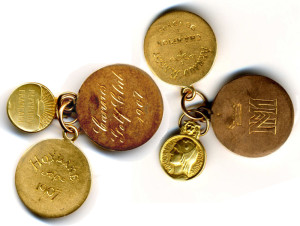
Later in 1907, Massy was invited to Cannes to play in the most prodigious golf tournament in Europe up to that date. The event was organized by Grand Duke Michael of Russia and the Cannes Golf Club. Massy won the stroke play event and the four-ball foursome event with Rowland Jones which carried £150 in prize money and £150 in expenses.
In July 1909, Arnaud was joined in North Berwick by Frenchman Jean Gassiat, a fellow professional at Biarritz. They played in a 300-guinea tournament on the newly opened North Berwick Burgh course (Glen golf course). Massy finished fourth behind George Duncan, Alex Herd and Harry Vardon. Three years later, in 1912, Jean Gassiat won the French Open for the first time.
In 1911, Massy came close to winning the Open again when he made up four strokes on Harry Vardon to tie at Sandwich. In their playoff, however, he conceded on the 35th hole. Massy rebounded after the loss, crossing the channel to win his third French Open by seven strokes with all the top players in the field.
At the opening of the Monte Carlo course in April 1912, Arnaud Massy won the Professional Tournament. That year he entered the Open at Muirfield from La Nivelle Golf Club, and finished in 10th place. La Nivelle, the other great club in the Basque region was a twelve hour train journey from Paris. The course was laid out between the Rhume mountain, the Nivelle river and the sea. The view from the 10th hole over the Bay of Biscay was described as spectacular.
Massy was the first winner of the French Open (1906), first winner of the Belgium Open (1910) and first winner of the Spanish Open (1912).
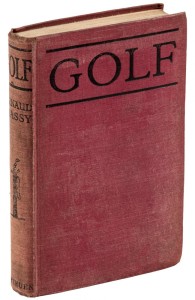 Arnaud Massy had an outstanding record in the Open Championship, consistently finishing in the top twenty from 1902 until 1922. He was involved in the first matches between France and the United States in 1913, and he wrote a book titled “Golf” which was translated into English in 1914.
Arnaud Massy had an outstanding record in the Open Championship, consistently finishing in the top twenty from 1902 until 1922. He was involved in the first matches between France and the United States in 1913, and he wrote a book titled “Golf” which was translated into English in 1914.
During the First World War he joined the French Army and was wounded at Verdun while attached to a grenade company. Following the conflict he continued his duties as pro at La Nivelle, St Jean de Lux, and returned to North Berwick in July 1919. According to an article in the Sydney Morning Herald, the military training Massy received before WWI gave him a stiffer, straighter build than most golfers who had a crouching gait and posture. Massy walked from the tee to the ball with a quick, regular step of the military man, and when he came up to the ball he did a right-wheel and presented his club, and played the second with a quickness and lack of hesitation in which he was only second to George Duncan. Massy’s putting, especially in the most difficult of all putts, those from five to nine feet was remarkable. It is said that he stroked the ball into the hole as though it were the simplest thing to do.
In 1921, Massy finished sixth in the Open Championship at St. Andrews while living at 118 Findhorn Place, Newington, Edinburgh. On the ninth of October, 1925, Massy won his record fourth French Open after a play-off with Archie Compston, the British PGA Champion. During the championship at Chantilly Golf Club, Massy made a hole-in-one at the par-3, 165 yard, ninth and the following day he won the French Native Championship. On the 23rd of December that year, Massy and Compston sailed from Southampton to New York to play in a series of exhibition matches in the USA.
They took a winter position at St. Augustine G.C in Florida and their first match was played on New Years Day 1926 against Bobby Jones and Watts Gunn, the winner and runner-up in the U.S. Amateur Championship. Watched by a record gallery, the Europeans won 3&2 and despite Massy being outdriven by Compston and Jones, the Frenchman’s chip shots and putting were so accurate that Massy posted the lowest individual score. Later in January, Bobby Jones got his revenge beating Massy and Compston 8&7, this time Jones was partnered with Tommy Armour, the former Scottish Amateur Champion.
Massy returned to France in 1940 after several years as the private professional to the Pasha of Marakesh in Morocco. A memento from that period is a photograph taken by Arnaud of Winston Churchill and William Gladstone when they visited Morocco. Massy had a spell at Biarritz before moving to Rouen in Normandy. Cabbage and black bread was generally his routine diet under the German occupation and he was forced by hunger to part with such treasured mementoes as the gold cuff-links given by the Duke of Windsor when Prince of Wales. He lost all his possessions but fortunately his prized championship medals were safe in Edinburgh. Following WWII, he went into semi-retirement teaching at Golf D’ Etretat in Normandy, where he had previously extended the course to 18 holes in collaboration with architect Julien Chartepie.
In 1946, Massy aged 69 years, was almost destitute and wrote to the R&A requesting assistance… but they refused. In 1950 he was lodging with a lady friend in a mansion house at 40 Rue Notre-Dame, Etretat when he suffered a stroke and died three weeks later on the 16th of April, 1950.
The headstone over the Massy grave was replaced in February 2013 and a service of commemoration was conducted. Arnaud Massy remains the greatest French hickory golfer ever. He recorded a total of 13 professional victories in his career.
extracted from northberwick.org.uk





